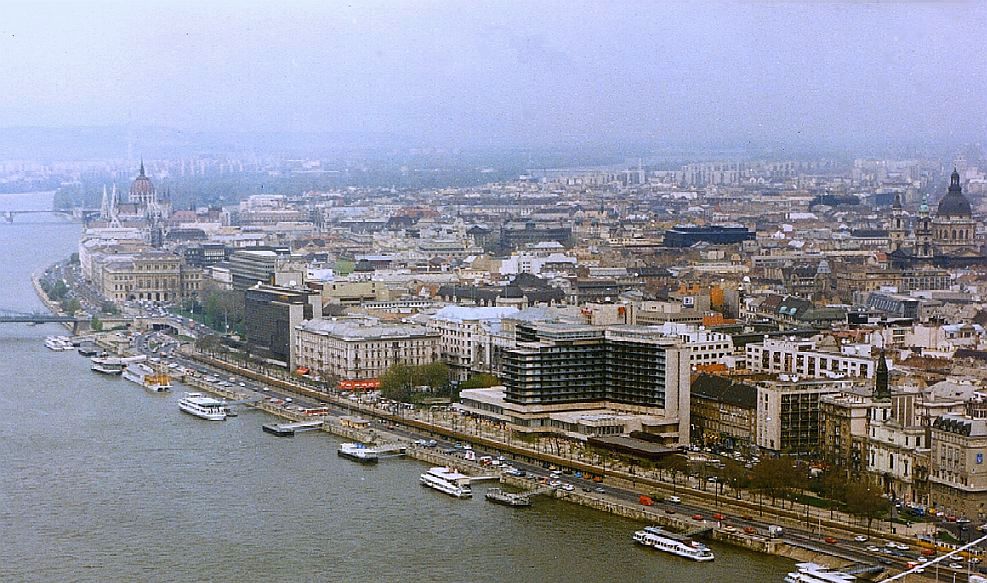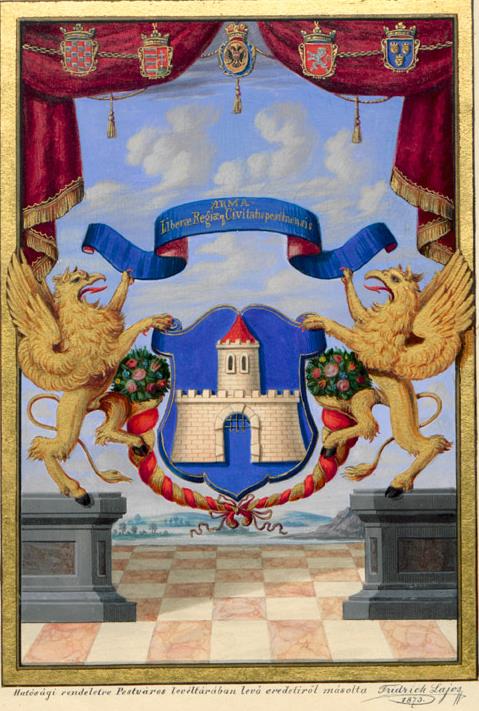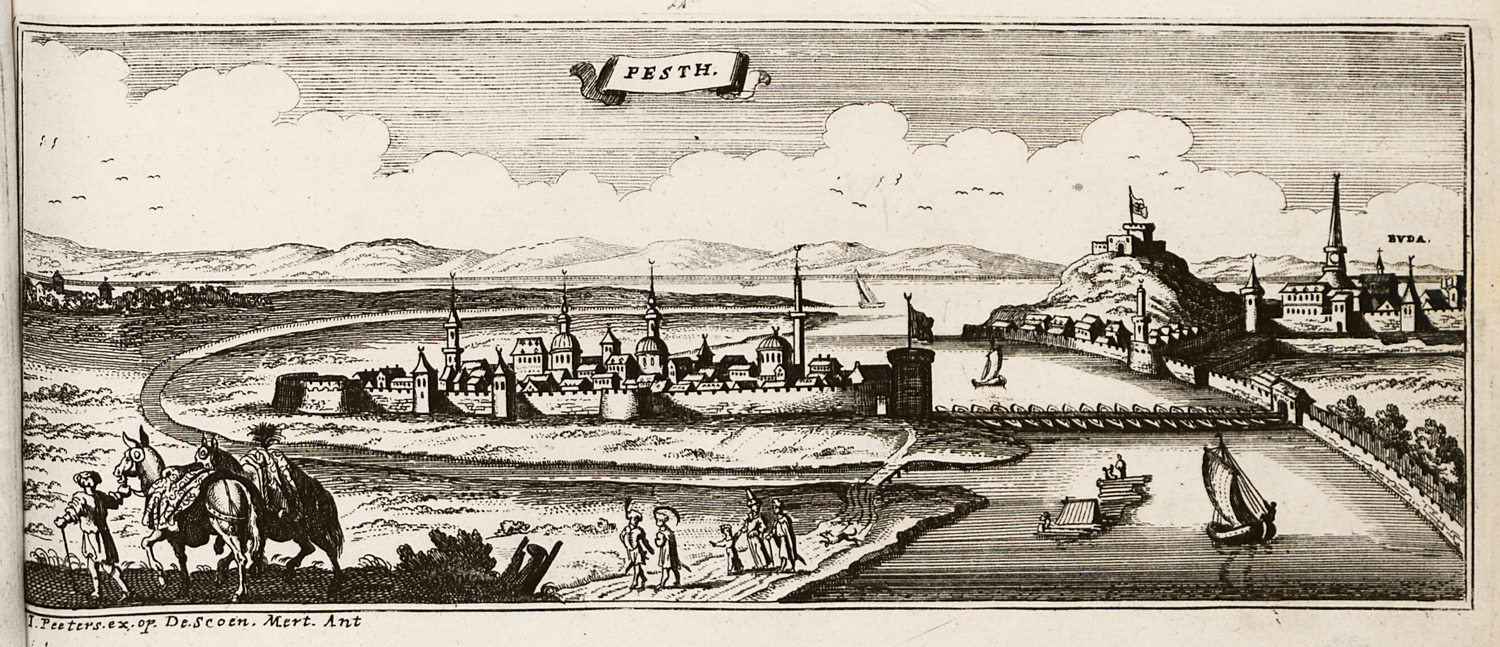Pesth on:
[Wikipedia]
[Google]
[Amazon]

 Pest () is the eastern, mostly flat part of Budapest, Hungary, comprising about two-thirds of the city's territory. It is separated from
Pest () is the eastern, mostly flat part of Budapest, Hungary, comprising about two-thirds of the city's territory. It is separated from


 Pest was originally founded as a
Pest was originally founded as a  In 1838 Pest was flooded by the Danube; parts of the city were under as much as eight feet of water, and the flood destroyed or seriously damaged three-fourths of the city’s buildings. In 1849 the first suspension bridge, the Széchenyi Chain Bridge, was constructed across the Danube connecting Pest with
In 1838 Pest was flooded by the Danube; parts of the city were under as much as eight feet of water, and the flood destroyed or seriously damaged three-fourths of the city’s buildings. In 1849 the first suspension bridge, the Széchenyi Chain Bridge, was constructed across the Danube connecting Pest with

 Pest () is the eastern, mostly flat part of Budapest, Hungary, comprising about two-thirds of the city's territory. It is separated from
Pest () is the eastern, mostly flat part of Budapest, Hungary, comprising about two-thirds of the city's territory. It is separated from Buda
Buda (; german: Ofen, sh-Latn-Cyrl, separator=" / ", Budim, –Ď—É–ī–ł–ľ, Czech and sk, Bud√≠n, tr, Budin) was the historic capital of the Kingdom of Hungary and since 1873 has been the western part of the Hungarian capital Budapest, on the ...
and √ďbuda, the western parts of Budapest, by the Danube River. Among its most notable sights are the Inner City, the Hungarian Parliament Building
The Hungarian Parliament Building ( hu, Orsz√°gh√°z , which translates to "House of the Country" or "House of the Nation"), also known as the Parliament of Budapest after its location, is the seat of the National Assembly of Hungary, a notable l ...
, Heroes' Square and Andr√°ssy Avenue.
In colloquial Hungarian, "Pest" is often used for the whole capital
Capital may refer to:
Common uses
* Capital city, a municipality of primary status
** List of national capital cities
* Capital letter, an upper-case letter Economics and social sciences
* Capital (economics), the durable produced goods used f ...
of Budapest. The three parts of Budapest (Pest, Buda
Buda (; german: Ofen, sh-Latn-Cyrl, separator=" / ", Budim, –Ď—É–ī–ł–ľ, Czech and sk, Bud√≠n, tr, Budin) was the historic capital of the Kingdom of Hungary and since 1873 has been the western part of the Hungarian capital Budapest, on the ...
, √ďbuda) united in 1873.
Etymology
According to Ptolemy the settlement was called ''Pession'' in ancient times ( Contra-Aquincum). Alternatively, the name ''Pest'' may have come from a Slavic word meaning "furnace", "oven" (Bulgarian ; Serbian /''peńá''; Croatian ''peńá''), related to the word (meaning "cave"), probably with reference to a local cave where fire burned. The spelling ''Pesth'' was occasionally used in English, even as late as the early 20th century, although it is now considered archaic.History
 Pest was originally founded as a
Pest was originally founded as a Celt
The Celts (, see pronunciation for different usages) or Celtic peoples () are. "CELTS location: Greater Europe time period: Second millennium B.C.E. to present ancestry: Celtic a collection of Indo-European peoples. "The Celts, an ancient ...
ic settlement, then a fortified camp established by the Romans (Contra-Aquincum) across the river from their military border camp at Aquincum. Remains of the original Roman camp can still be seen at Március 15. tér.
During the Middle Ages, Pest was an independent city
A city is a human settlement of notable size.Goodall, B. (1987) ''The Penguin Dictionary of Human Geography''. London: Penguin.Kuper, A. and Kuper, J., eds (1996) ''The Social Science Encyclopedia''. 2nd edition. London: Routledge. It can be def ...
separate from Buda/Ofen, which became an important economic center during the 11th‚Äď13th centuries. The first written mention dates back to 1148.
Pest was destroyed in 1241 Mongol invasion of Hungary Mongol invasion of Hungary may refer to:
* First Mongol invasion of Hungary, 1241‚Äď1242
** Battle of Mohi
* Second Mongol invasion of Hungary, 1285‚Äď1286
{{Disambig ...
, but was rebuilt shortly thereafter.
Demographically, in the 15th century Pest was mostly Hungarian, while Buda across the Danube had a German-majority population.
 In 1838 Pest was flooded by the Danube; parts of the city were under as much as eight feet of water, and the flood destroyed or seriously damaged three-fourths of the city’s buildings. In 1849 the first suspension bridge, the Széchenyi Chain Bridge, was constructed across the Danube connecting Pest with
In 1838 Pest was flooded by the Danube; parts of the city were under as much as eight feet of water, and the flood destroyed or seriously damaged three-fourths of the city’s buildings. In 1849 the first suspension bridge, the Széchenyi Chain Bridge, was constructed across the Danube connecting Pest with Buda
Buda (; german: Ofen, sh-Latn-Cyrl, separator=" / ", Budim, –Ď—É–ī–ł–ľ, Czech and sk, Bud√≠n, tr, Budin) was the historic capital of the Kingdom of Hungary and since 1873 has been the western part of the Hungarian capital Budapest, on the ...
. Subsequently, in 1873, the two cities were unified with √ďbuda to become Budapest.
Notable people
* L√°szl√≥ Teleki (1811‚Äď1861), writer, statesman and magician * Henrik Weber (1818‚Äď1866), painter * Theodor Herzl (1860‚Äď1904), founder of the political Zionist movement *Harry Houdini
Harry Houdini (, born Erik Weisz; March 24, 1874 ‚Äď October 31, 1926) was a Hungarian-American escape artist, magic man, and stunt performer, noted for his escape acts. His pseudonym is a reference to his spiritual master, French magician ...
(1874‚Äď1926), illusionist, escape acts performer
See also
* Budapest *Inner City (Budapest)
__NOTOC__
Inner City ( hu, Belv√°ros; german: Innenstadt) the central part of Budapest. It is more or less equivalent with the historic old town of Pest.
Location
The Inner City is situated on the left bank of the river Danube. Until 1949 it w ...
* Pest County
* √öjpest (New Pest)
* Kispest (Little Pest)
* PestszentlŇĎrinc (Saint Lawrence of Pest)
* Buda
Buda (; german: Ofen, sh-Latn-Cyrl, separator=" / ", Budim, –Ď—É–ī–ł–ľ, Czech and sk, Bud√≠n, tr, Budin) was the historic capital of the Kingdom of Hungary and since 1873 has been the western part of the Hungarian capital Budapest, on the ...
* √ďbuda (Old Buda)
References
Further reading
* Beksics, Guszt√°v:'' Magyarosod√°s √©s magyarosit√°s. K√ľl√∂n√∂s tekintettel v√°rosainkra''. Budapest, 1883External links
{{Authority control Geography of Budapest